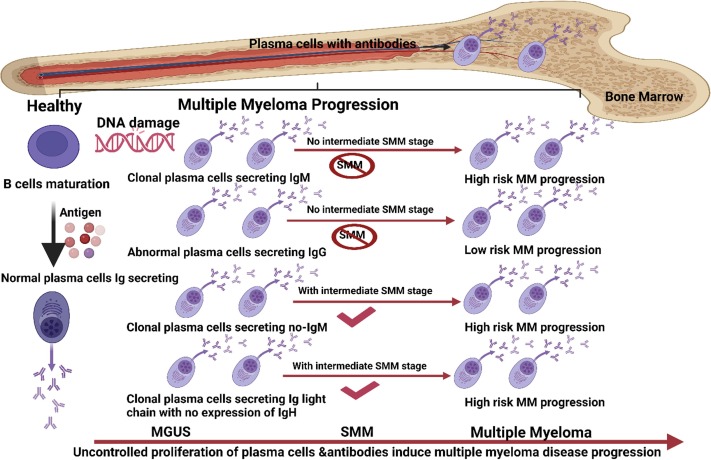
Definitions
1. SIRS (Systemic Inflammatory Response Syndrome)
SIRS is a clinical syndrome characterized by a systemic inflammatory response to various stimuli, which can include infection, trauma, or other insults. It is defined by the presence of two or more of the following criteria:
- Fever (>38°C) or hypothermia (<36°C)
- Tachycardia (heart rate >90 beats per minute)
- Tachypnea (respiratory rate >20 breaths per minute) or hypercapnia (PaCO2 <32 mmHg)
- Leukocytosis (white blood cell count >12,000 cells/mm³), leukopenia (<4,000 cells/mm³), or >10% immature neutrophils.
2. Sepsis
Sepsis is a life-threatening organ dysfunction caused by a dysregulated host response to infection. It occurs when the body’s response to an infection injures its tissues and organs. The criteria for sepsis include the presence of SIRS in conjunction with a confirmed or suspected infection.
3. Septicemia
Septicemia refers specifically to the presence of bacteria in the bloodstream, leading to systemic illness. It is often used interchangeably with sepsis but emphasizes the microbial aspect.
4. Septic Shock
Septic shock is a severe manifestation of sepsis characterized by persistent hypotension despite adequate fluid resuscitation and associated with an increased risk of mortality. It involves profound circulatory, cellular, and metabolic abnormalities.
Pathophysiology
The pathophysiology of SIRS and its related conditions involves complex interactions between immune responses and inflammatory mediators:
- Infection Trigger: The process typically begins with an infectious agent (bacteria, virus, fungi) entering the body.
- Immune Activation: The immune system recognizes pathogens through pattern recognition receptors (PRRs) that detect pathogen-associated molecular patterns (PAMPs).
- Cytokine Release: Activated immune cells release pro-inflammatory cytokines such as TNF-alpha, IL-1, and IL-6.
- Endothelial Dysfunction: These cytokines lead to endothelial activation and dysfunction, resulting in increased vascular permeability and vasodilation.
- Coagulation Cascade Activation: There is also activation of the coagulation cascade leading to disseminated intravascular coagulation (DIC), contributing to microvascular thrombosis.
- Organ Dysfunction: As inflammation spreads systemically, it can result in multi-organ failure due to inadequate perfusion and oxygenation.
Criteria for SIRS
The criteria for diagnosing SIRS are based on clinical parameters that reflect systemic inflammation:
- Temperature Abnormalities:
- Fever: Temperature >38°C
- Hypothermia: Temperature <36°C
- Heart Rate:
- Tachycardia: Heart rate >90 beats per minute
- Respiratory Rate:
- Tachypnea: Respiratory rate >20 breaths per minute or arterial CO2 tension <32 mmHg
- White Blood Cell Count:
- Leukocytosis: WBC count >12,000 cells/mm³
- Leukopenia: WBC count <4,000 cells/mm³
- Presence of immature neutrophils (>10%)
Meeting two or more of these criteria indicates SIRS.
Microbial Triggers
Microbial triggers for SIRS can originate from various pathogens:
- Bacterial Infections: Commonly gram-positive bacteria (e.g., Staphylococcus aureus) and gram-negative bacteria (e.g., Escherichia coli).
- Fungal Infections: Such as Candida species.
- Viral Infections: Including influenza virus and SARS-CoV-2.
- Parasitic Infections: Such as malaria.
These microbes can trigger an inflammatory response through their components like lipopolysaccharides (LPS) from gram-negative bacteria or peptidoglycans from gram-positive bacteria.
Laboratory Diagnosis
Laboratory diagnosis of sepsis includes:
- Blood Cultures: To identify causative organisms; at least two sets should be taken before starting antibiotics.
- Complete Blood Count (CBC): To assess white blood cell count and differential.
- Lactate Levels: Elevated lactate indicates tissue hypoperfusion.
- Procalcitonin Levels: May help differentiate bacterial infections from other causes of inflammation.
- Coagulation Studies: To evaluate for DIC if indicated.
- Urinalysis and Imaging Studies: Depending on suspected source of infection.
Management
Management strategies for sepsis include:
- Early Recognition & Monitoring: Rapid identification using screening tools like qSOFA score.
- Antibiotic Therapy: Broad-spectrum antibiotics should be initiated within one hour after diagnosis; tailored therapy follows culture results.
- Fluid Resuscitation: Administer intravenous fluids aggressively to restore hemodynamic stability; crystalloids are preferred initially.
- Vasopressors: If hypotension persists despite fluid resuscitation, norepinephrine is commonly used as first-line therapy.
- Source Control: Identify and manage the source of infection through drainage procedures or surgical intervention if necessary.
- Supportive Care: Includes monitoring organ function and providing supportive measures such as mechanical ventilation if respiratory failure occurs.
In summary, understanding SIRS, sepsis, septicemia, and septic shock along with their pathophysiology allows for timely recognition and management that can significantly improve patient outcomes.







